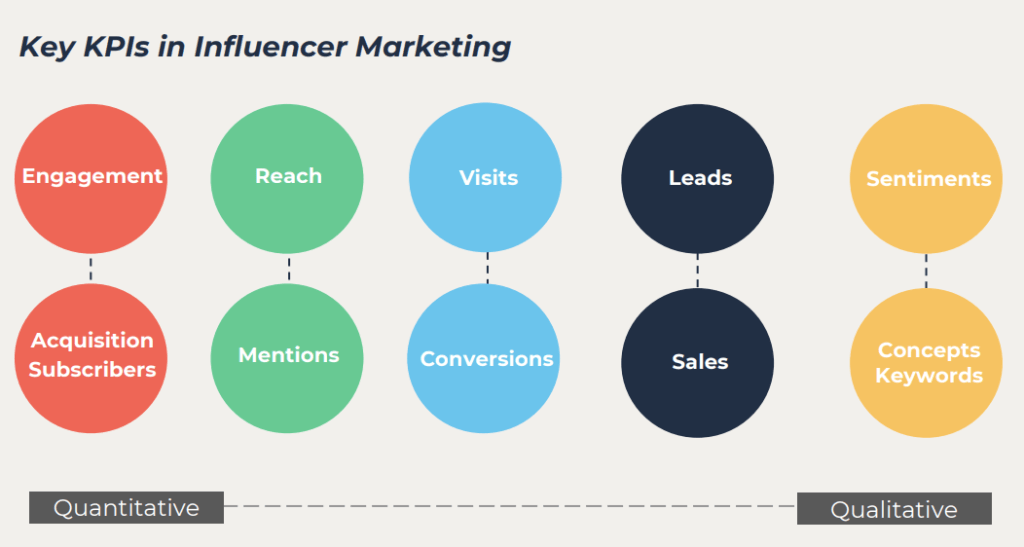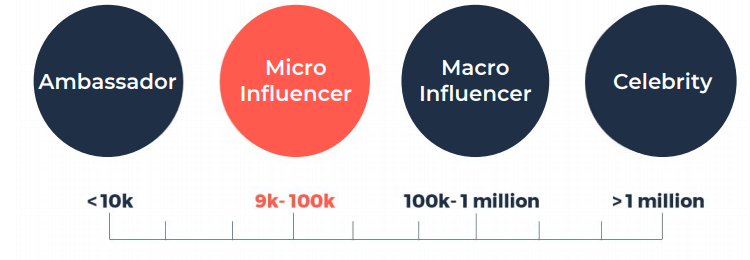Blogs > Get In The Know – Influencer Marketing

Get In The Know – Influencer Marketing
October 15, 2019 Bianca Altomare
In late 2019, the online marketing scene is constantly becoming more saturated by traditional marketing tactics we have all over seen now. Consumers are finding it harder to trust brands they aren’t familiar with, as many are taking a new approach and presenting their products in a more modern way.
It’s not hard to realize that in this day and age digital is a must, if your brand isn’t moving forward with this digital evolution, you aren’t benefiting to your fullest potential with the resources available at your fingertips.
Influencer Marketing is a form of marketing that is being used more frequently by businesses to extend a message to the influencer’s followers, one post by an influencer can reach thousands of people around the world. An influencer is someone who represents a product or service as a brands advocate, where they are paid to post content through photos and videos or messages that will impact the behaviour of their social following to have them more enticed into making a purchase.
This form of marketing is beneficial because an influencer’s followers trust recommendations and reviews by their peers and influencers are looked up to. Think about it: are you more likely to purchase a pair of runners that you’ve seen your favourite athlete promote?

*Photo sourced from Digimind
‘65% of marketers are planning to incorporate influencer marketing as part of their marketing plan within the next 12 months’ (Be one to make this move first!)
Depending on the outcome your brand is aiming to achieve, breaking it down in a measurement sort of manner deciphering if your brand needs a macro versus micro influencer is a good place to start. Below we have broken it down into advantages and disadvantages both kinds of influencers obtain
Macro-Influencers
- Typically athletes, celebrities, individuals with more that 100,000+ followers
- Usually have low to no engagement with followers
- Many don’t actually use/believe in what they’re marketing – comes off fake
- Not all have knowledge behind product/service
- Majority of followers come from clout
- Less control over content posted
Micro-Influencer
- Smaller following (9,000-100,000)
- Closer/relatable to a brand’s target audience, can reach niche audience or communities
- More authentic, active, committed
- Solid knowledge of product or services their promoting
- Users respect influencer and follow for their passion
- Higher commitment and engagement
- Cost effective and affordable
- Outside-the-box marketing techniques
 *Photo sourced from Digimind
*Photo sourced from Digimind
If your brand’s main goal is to get some spotlight and name recognized, the use of macro-influencers will achieve that reach. Micro-influencers are more often used for authenticity, fostering connections and driving personal conversions. Brands that work with micro-influencers focus on targeting an audience more likely to convert into sales.
After reviewing over some Instagram statistics, Digimind has found that:
- Accounts with under 1,000 followers earned likes 8% of the time; accounts with over 10 million followers only got interactions 1.6% of the time.
- Profiles with 1,000-10,000 got likes 4% of the time
- Users with under 1,000 followers received comments 0.5% of the time
- Accounts with over 10 million followers received comments 0.04% of the time
‘55% of consumers trust UGC over other forms on marketing, making it a good decision for brands to encourage influencer marketing over direct to consumer’
Considering marketing tactics are never a one size fits all, be aware that not every strategy will work for every industry. Micro influencing may not work as well for some niches as they would for others. For example, the fashion industry is a very popular industry where it would require a macro influencer, someone that would give a wide enough outreach to stick out in such a saturated industry.
Micro influencers are an effective and affordable marketing strategy for building brand awareness, working particularly well for small businesses and startups. Brands that use this method will form lasting relationships with their consumers because they will trust the opinions of the influencers.
Finding the right influencer for your business
Finding an influencer whose niche aligns with your brands personality and style is important. An influencer that already holds a following that has similarities to your own. For example, if you sell cruelty-free makeup products you won’t want an influencer that flaunts using companies that don’t support the same.
There are a few ways to source the right influencer on your own. Scouting one on your own through Instagram may be time consuming, but remember it’s important that your influencer’s content is aligned with your brand message. There are different ways to search, which can be done by looking up relevant hashtags or scrolling through the top posts that come up.
A couple tips to guide you in the right direction on where to start:
- Use hashtags to find influencers, start off with searching specific but relevant hashtags that align with your company or products on Instagram or Twitter to find the top posts that have been used. You can even search hashtags like #sponsored, #ad, #blogger, #influencer to filter the results.
- Search through your followers or those who engage with your posts to see if any have a large following. Choosing someone that is already loyal to your product or service will make it easier to work with them to promote your brand.
- Search on Google. Be specific in your search. For example if you own a local yoga studio, begin with searching ‘fitness/health blogger in [insert city name here]’.
For a complete breakdown on finding the right influencer to promote your brand/product, check out Oberlo’s article here.
There are a number of influencer marketing platforms that can be leveraged to help you discover influencers to make scouting a little lighter for you. Some of these platforms allow you to search based on occupations, follower demographics, favourite topics, social media metrics, locations allowing you to be specific on exactly what you’re trying to get out of this.
Here are 31 of the best Influencer Marketing Platforms as of 2019 you can try.
Influencer Marketing Hub has found with studies that businesses who thoroughly understand influencer marketing have impressive ROI with up to $18 in earned media for ever $1 they spend on influencer marketing. For more insight on the recent growth of influencer marketing, check out their 2019 State of Influencer Marketing Benchmark Report.
By now you’re probably curious on what cost comes with a post by an influencer. When breaking it down with macro versus micro influencers it’s obvious the price point will differ when comparing the two. Macro influencers (100,000+ followers) which are typically internet and Hollywood celebrities, tend to charge higher prices than Micro influencers (9,000-100,000 followers).
Understand that there are plenty of factors to consider when putting a dollar sign before a influencer post, such as the platform and the type of content (photo, video, text based). For a ballpark on how much you should be paying your influencers, WebFX has provided an average pricing format for each social platform.
Additional Information:
5 Tips for Finding the Right Social Influencers for Your Brand
Influencer marketing platforms
2019 Influencer Marketing Statistics
View All